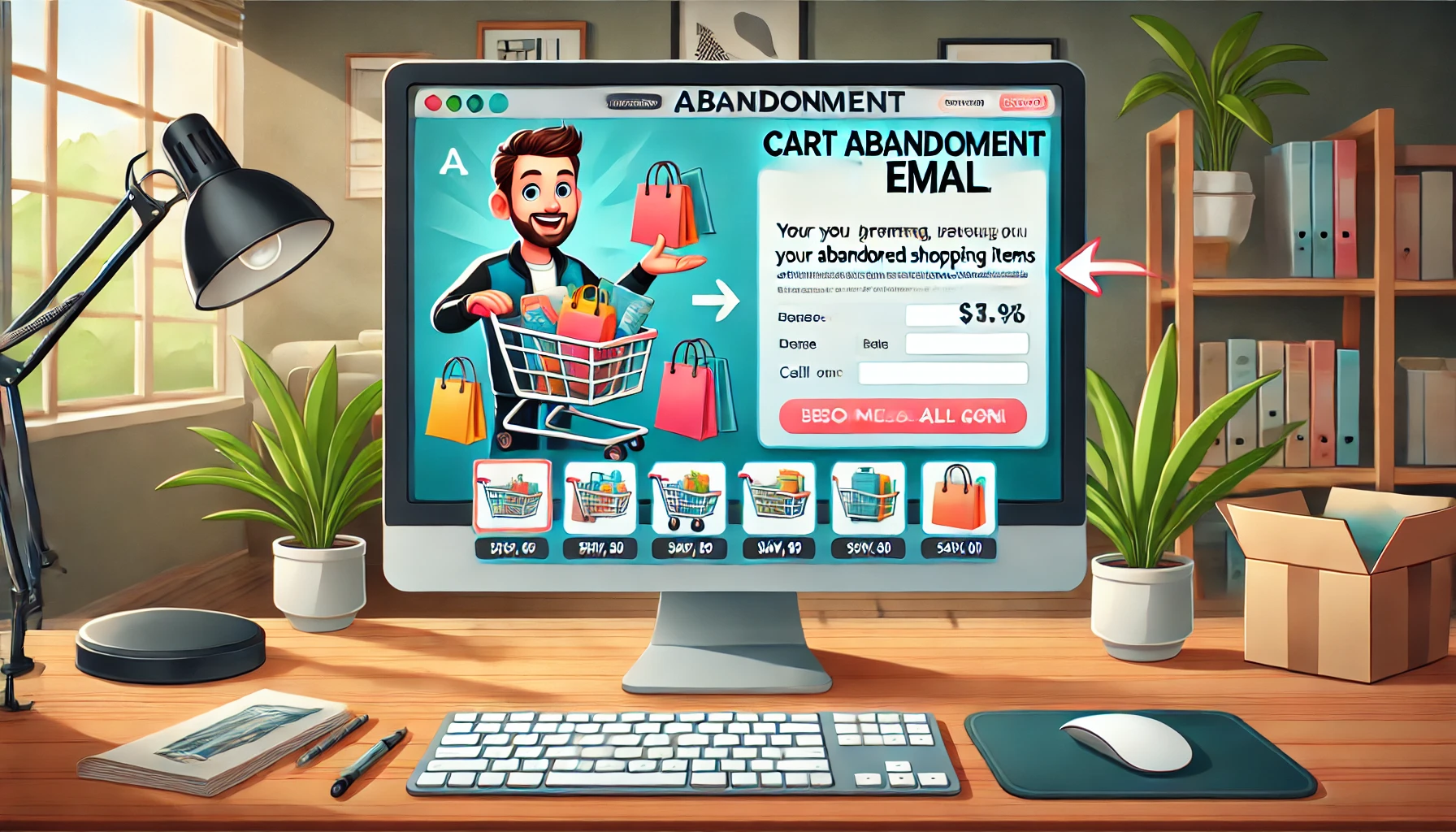Keeping your online reputation in great shape is crucial and one of the best ways to do this is by actively responding to reviews, especially the negative ones.
In this article, I’m going to break down why reviews are so critical for your business and why it’s essential to address those less-than-stellar comments to protect your brand’s image. I’ll also share an effective strategy for handling negative feedback that not only appeases the original reviewer but also impresses others who read your reviews.
We’ll finish off with some practical examples of how to respond to negative reviews, which can help you keep your customers satisfied and boost your online reputation.
Why Do Reviews Matter So Much?
Think about the last time you wanted to buy something. Chances are, you read through a few reviews before making a decision. You’re not alone in this—according to the Spiegel Research Center in 2017, a whopping 92% of consumers glance at at least one review before buying something. What’s more, 85% of people trust these online reviews as much as personal recommendations from friends or family.
So, ignoring your reviews just isn’t an option.
Besides helping customers decide, reviews play a big part in local SEO. Moz points out that reviews are the third most significant factor for ranking in Google’s Local Pack. They even have a decent impact on general search rankings.
But reviews aren’t just about rankings; they’re also a goldmine of feedback. Yes, even the negative ones are valuable. They give you insights into what might not be working and what you can improve. By addressing both the good and the bad feedback, you can fine-tune your offerings, enhance your service and ultimately provide a better customer experience.
Why It’s Crucial to Respond to Negative Reviews
You now understand how vital reviews are for your brand. But did you realize that responding to them, especially the negative ones, is just as critical?
Responding to negative reviews is more than just defending your brand; it’s an opportunity to turn a less-than-perfect situation around. Let’s dive into why it’s essential to tackle these reviews head-on.
Turning a Negative Into a Positive
Often, a negative review might be the only chance you get to rectify a situation with a dissatisfied customer. Although many won’t come straight to you with their grievances, they won’t hesitate to voice their discontent online. This is your opportunity to gather more details about the issue, resolve it and hopefully prevent it from happening again.
Demonstrating Customer Commitment
The way you handle negative feedback also signals to potential customers what kind of service they can expect from your business. Moreover, a mix of both positive and negative reviews lends credibility to your business. A slew of only glowing reviews might seem suspect, as if they’re too good to be true.
When you respond to a negative review, it’s your chance to show not just the disgruntled customer but also prospective ones that you genuinely care about their satisfaction and are proactive about making things right.
Humanizing Your Brand
Touching on what we’ve hinted at before, negative reviews can help humanize your brand. A business profile without a single complaint might seem unrealistic. However, how you respond to criticism reveals a lot about your brand’s personality and can actually enhance your appeal.
Dealing with negative feedback effectively shows customers that your business is run by real people who are committed to customer satisfaction. This authenticity can make all the difference in attracting and retaining customers.
How to Handle Negative Reviews
Let’s face it, nobody’s perfect and in the business world, mistakes are usually followed by negative reviews. While it’s not the most pleasant experience, it does give us a chance to learn and improve. Here’s a straightforward guide on how to respond to negative reviews in a way that could actually boost your brand’s reputation.
Step 1: Analyze the Problem
Getting a negative review can be a real bummer and it’s normal to feel a bit upset at first. But before you rush to respond, take a deep breath and really consider what the reviewer has pointed out.
Look at things from your customer’s perspective. Try to pinpoint where things went wrong or where their expectations weren’t met. This step is crucial because understanding the issue fully is the first step toward making things right.
And remember, it’s completely fine if you need more details to fully grasp the issue. In such cases, don’t hesitate to respond by asking a few questions to clarify their concerns.
Step 2: Apologize Sincerely
Begin your response with a genuine apology. Recognize that the customer’s dissatisfaction is important and make it clear that you value their feedback and regret any negative experiences they’ve had.
An apology shows you’re not just listening but also care about making amends, even if you feel the criticism might not be entirely fair.
Step 3: Empathize With the Reviewer
After apologizing, the next step is to show empathy. Connecting on a human level can make a huge difference. If you’ve ever been let down as a customer, you know exactly how they feel.
Imagine yourself in their shoes—what would you want the business to say to you? This approach not only helps in crafting a response that resonates but also demonstrates that your business values its customers and is committed to improving their experiences.
By following these steps, you can turn a negative review into a positive opportunity to showcase your commitment to customer service and possibly win back an unhappy customer, as well as impress potential customers who see how you handle feedback.
Step 4: Provide a Clear Explanation
Whenever you’re addressing a negative review, it’s crucial to explain what led to the customer’s poor experience. This isn’t about making excuses for what happened. Instead, it’s about showing that you understand where things went wrong and how the problem occurred. This step is your chance to demonstrate that you’re taking the feedback seriously and are actively looking for ways to prevent similar issues in the future.
Step 5: Keep It Professional—No Arguments
No matter the circumstances, resist the urge to argue with the reviewer. I get it—it’s tough. You’ve poured your heart and soul into your business and criticism can sting. However, it’s important to stay professional and composed. Recognize the reviewer’s feelings and remember that perfection is unattainable for any business.
The main aim here is to find a resolution that leaves the customer feeling heard and respected, if not entirely happy. Keep in mind, your response isn’t just for the reviewer. It’s also for all the potential customers who will read the review and your response. They’re watching to see how you handle criticism.
Being argumentative can send a message that you don’t value customer feedback, which could deter potential customers. Instead, invite the reviewer to discuss the matter privately, perhaps on a phone call or through an email conversation. This can be more constructive for gathering details about the issue and understanding more about how your business can improve.
Handling reviews in this manner not only helps in potentially salvaging a customer relationship but also enhances your business’s reputation among other viewers who notice your thoughtful engagement.
Step 6: Move the Discussion Offline
Like I mentioned before, it’s smart to shift the conversation away from the public eye of the review thread. It’s unlikely you’ll solve everything with just one public reply. When you first respond, give the reviewer a way to contact you directly to work through their concerns.
You don’t need to write a novel in your response. Keep it simple, something like:
“Really sorry to hear you’re upset! I’d really like to sort this out with you directly to make sure I understand everything completely. Could you please call me at 123-456-7890, or if email is better for you, drop me a line at name@yourbusiness.com? Looking forward to sorting this out swiftly!”
With a reply like that, you’re apologizing, acknowledging their dissatisfaction and showing your willingness to make things right. That’s pretty much the goal for this step.
Step 7: Update on Progress
Whether the reviewer gets back to you or not, it’s good practice to post an update on the review thread. If they don’t reach out, you might say:
“Hey there! I haven’t heard back from you yet but I’m still here to help sort this issue out whenever you’re ready. Just give me a call or send an email my way!”
This kind of update shows everyone else checking out your reviews that you’re proactive about solving issues and keeping the lines of communication open, just in case the customer decides to discuss their concerns.
And if things do get resolved after talking to the reviewer, a simple update can go a long way:
“Thanks so much for getting in touch about your concern. I’m thrilled we found a solution and I can’t wait to have you back again soon!”
This lets everyone know that you’ve addressed the problem and reinforces trust, showing that your business cares deeply about customer satisfaction and maintaining a good reputation.
Step 8: Suggest Updating the Review
Once you’ve worked out a solution that satisfies the person who left a negative review, it’s a good move to ask if they’d be willing to update their review. Often, they’re more than happy to do so because not only have you addressed their initial concerns but you’ve also made them feel positively about their new experience with your business.
Example Responses to Negative Reviews
We’ve already discussed some strategies for responding to negative reviews but I want to give you a few more examples so you have a complete toolkit. Feel free to adapt these templates to fit the specific details of each situation.
Response Example #1
Hey [Name],
I’m [Your Name] and I handle [job title] here at [your business]. I really appreciate you taking the time to tell us about your experience. I’m genuinely sorry to hear about what happened.
I’d really like to discuss this with you personally to see how we can fix it. Could you please call me at 123-456-7890 or shoot me an email at name@yourbusiness.com? I’m here to help.
Response Example #2: Offering a Discount
Hello [Name],
I’m [Your Name] and I work as [job title] at [your business]. Thank you for your honesty in sharing what happened. I’m sorry to see that things didn’t go as planned.
I’d love to offer you [specific offer] to hopefully improve your experience. While it won’t undo the past, I hope it can make a positive difference going forward.
Please contact me at 123-456-7890 or via email at name@yourbusiness.com to get the details and take advantage of this offer.
Using these approaches shows that you’re committed to turning negative experiences into positive ones and maintaining a trustworthy relationship with your customers.
Response Example #3: Requesting More Information
Hey [Name],
I’m [Your Name] and I handle [job title] at [your business]. Thanks a ton for taking the time to share your feedback. I’m really sorry to hear that your experience wasn’t up to par.
I must admit, I’m still a bit unclear about the specifics of what went wrong and I want to ensure we sort this out properly. Could you please give me a call at 123-456-7890 or send me an email at name@yourbusiness.com? I’d like to understand more about the issue so we can find the best solution for you.
Response Example #4: The Public Update
Hey there! I haven’t heard back from you yet but I’m still here and ready to help sort out any issues. Whenever you’re ready, give me a call or drop me an email!
Or:
Thanks so much for chatting with me about what happened. I’m thrilled we could solve the problem and I’m looking forward to having you with us again soon!
Response Example #5: Requesting an Updated Review
Hi [Name],
Just checking in to make sure everything’s been sorted out to your satisfaction regarding our recent issue.
If things are all good now, I’d really appreciate it if you could update your review to reflect the resolution. It would mean a lot if you could share your updated experience. Would you be up for doing that?
And if there’s still something amiss, I’m here to make it right. Just let me know what more I can do for you.
Conclusion
Responding to negative reviews is more important than you might think. It’s crucial not just for the customer who had a bad experience but also for potential customers who read these reviews and yes, it really impacts your bottom line.
From the examples we’ve walked through, you’ve seen how opening up a dialogue with unhappy customers can lead to positive outcomes for everyone involved. It’s all about turning those frowns upside down.
But remember, a string of negative reviews, even if they’re all addressed and resolved, might give off the wrong vibe to people checking out your business for the first time.
So, if you’re ready to take your brand’s reputation to the next level, you’re going to need top-notch reputation management services.
That’s where the Digital Marketing Agency comes into play.
We’re in the business of boosting and maintaining your brand’s image online across various platforms—think press releases, online forums and all the major social media sites.
Plus, we’ve got your back with review management services for platforms like Google, Yelp and Facebook. We’re here to ensure that your online presence is overwhelmingly positive, helping you build trust and attract more customers.












